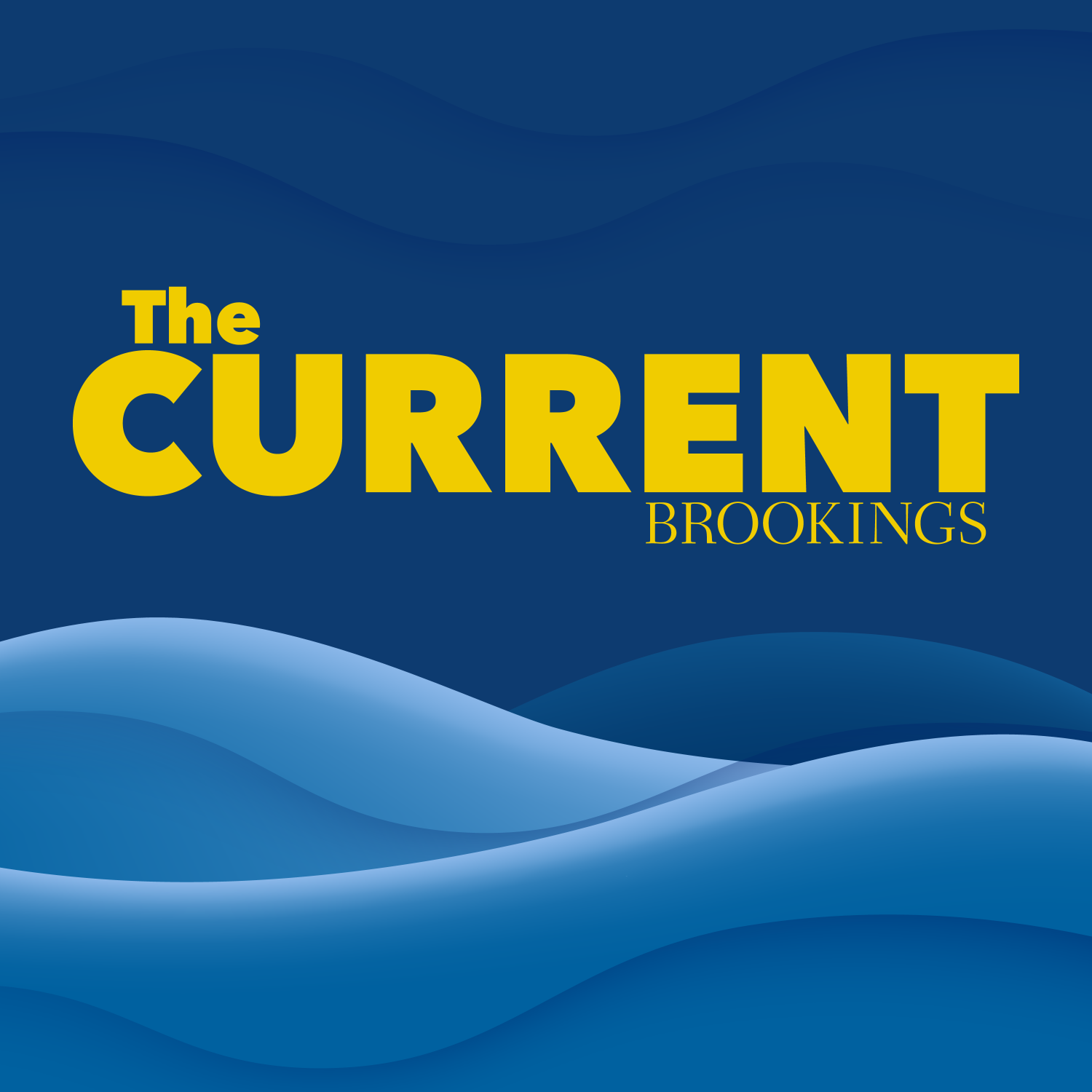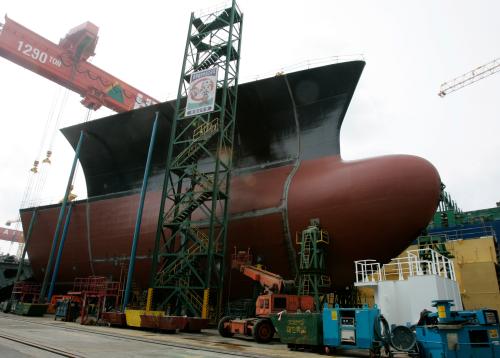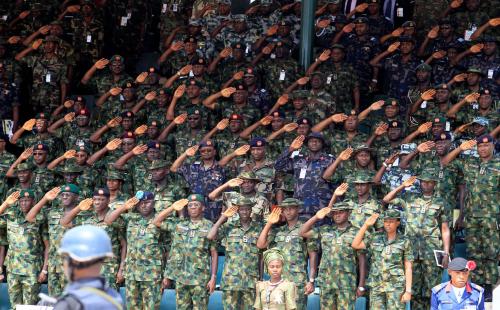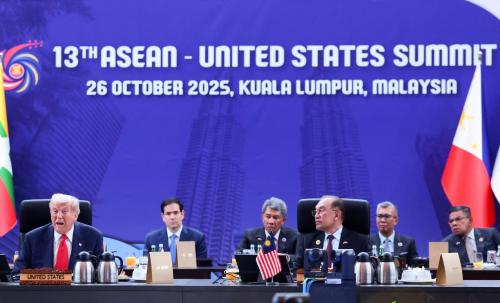Russia has threatened consequences for Lithuania after the NATO member state blocked transit of EU-sanctioned goods through its territory to the Russian exclave of Kaliningrad. Ahead of the NATO summit in Madrid, Dan Hamilton explains the new front in tensions between NATO and Russia and the potential for Russian escalation.
Related material:
- NATO after the invasion
- Strengthening the US and NATO defense postures in Europe after Russia’s invasion of Ukraine
Listen to Brookings podcasts here, on Apple or Google podcasts or on Spotify, send email feedback to [email protected] and follow us at @policypodcasts on Twitter.
Thanks to audio engineer Gaston Reboredo.
TRANSCRIPT
PITA: New tensions are rising between Russia and NATO after Lithuania announced last week it would halt transportation of EU-sanctioned goods coming from Russia across Lithuanian territory to the Russian enclave of Kaliningrad on the Baltic Sea. With us to discuss the current standoff and whether it could become a new flashpoint in Russia’s war on Ukraine is Dan Hamilton, nonresident senior fellow, Center on the US and Europe, and president of the Transatlantic Leadership Network.
Dan, thanks for talking to us today.
HAMILTON: Good to be with you.
PITA: Maybe you could start us off with a little bit of background about why this situation even exists. Why is there this this little pocket of Russia, roughly a million people, in between Lithuania and Poland, with no direct border with Russia?
HAMILTON: Right, well, the war in Ukraine is having us all look at the maps again of eastern Europe, and this is a part of Europe where the borders have always been switching around. So this part of Europe used to be German territory. Kaliningrad used to be called Königsberg, who was a very important German city, and it was given back it was given to the Soviet Union at the end of the World War II, at the Potsdam Conference. So the Soviet Union administered it and named it Kaliningrad in 1946, and so it was really just part of the Soviet Union.
And so these borders didn’t matter as much when everything was connected, but at the end of the Cold War, the Baltic States each broke free and are now members of the EU and NATO, which has left this piece of Russian territory as an exclave. It’s really not connected to the main part of Russia, and you have to travel through two other countries to get from Kaliningrad, Russia to the rest of Russia. Lithuania has is one of the bordering countries and has the rail transport from Kaliningrad goes through Lithuania and then into Belarus to Russia.
So it’s a very complicated set of arrangements. These were all set up at the end of the Cold War when relations with Russia were fairly good. And it was to make sure, you know, none of these problematic areas became a flashpoint, but unfortunately the turn of events now, it is. It’s a very dicey situation if you look at the map and how this could unfold.
PITA: Maybe you could also explain to us why Kaliningrad is important to Russia. Why is it important to them in general but also how does this play into their current war against Ukraine?
HAMILTON: Right, well, it is Russian territory, it’s as agreed internationally, so no one’s questioning that. It’s the home to the Baltic fleet, the Russian Baltic fleet. It’s the only port that is ice-free in the Baltic Sea for Russia. The other ones closer to St Petersburg all freeze over. It’s also become an interesting place militarily. Russia has stationed Iskander missiles there. They’ve never said whether those have nuclear weapons attached to them; they are capable, though, of having those. Western intelligence sources say, and openly, that they do have those missiles in Kaliningrad.
So there are two points of a vulnerability here: one is on Russia’s side, you have a small piece of Russian territory cut off from the rest of Russia. It’s obviously a very fragile and weak situation, but it has nuclear weapons, probably, in it and it’s the key to the Baltic fleet, which is really quite important to Russia.
But we have a Western vulnerability too, which is, again, if you look at the map, you see a tiny sliver of territory between Poland and Lithuania called the Suwalki Gap. This is only about 60 miles of border and on both sides of this is hostile territory, if you will: Belarus on one side and Russia on the other. And that’s at the moment the only way NATO could defend the Baltic states on land is through this Suwalki Gap, so it could easily be closed off if Russia so decided. And that’s always been identified as probably NATO’s weakest vulnerability in the in the context of conflict. So if Russia wants to push its advantage here and Ukraine, it will maybe do something. It’s threatened to do something now.
What Lithuania did was simply to start to apply sanctions that were approved by the European Union a long time ago and they went into effect just recently. And these are on sort of some types of iron and steel, luxury goods, that are being transported across this rail link. So they are simply applying it only to those sanctioned goods. It’s not affecting any other person traffic or any other types of traffic, but Russia has said this is a provocation and they have already threatened Lithuania with an unknown response.
PITA: That was going to be my question, is what has Russia threatened? What’s sort of the diplomatic state of the of the back-and-forth right now?
HAMILTON: Well, they had Russia’s Security Council, a close advisor to Vladimir Putin demonstrably held a meeting of the Security Council in Kaliningrad recently, and at that point, he said Lithuania is going to suffer the consequences for being so provocative. But that’s the extent of it. Putin hasn’t said anything in particular what that might mean, so it’s hard to know exactly.
PITA: What role, if any, do you see that Sweden and Finland, neighboring countries, their moves now to join NATO, what sort of increasing pressure is this? Is Russia the viewing this more threateningly now because they might also be NATO? How is that playing into the situation?
HAMILTON: Yes, I think it does. If you again, if you look at the map, you see that, until now, currently with Finland, Sweden not in NATO, then you have some neutral countries in the Baltic coasts, you have Russia and then you have NATO countries. So it’s a mixed bag, which means it’s hard to defend the Baltic states from NATO territory across the Baltic region. That would just be Denmark or Norway, which is farther away.
So if you now bring Sweden and Finland into NATO, the Baltic Sea is essentially then a NATO lake with only Russia as a non-NATO country there, so that you can imagine the Russians don’t probably appreciate that happening. It also means you can defend then the Baltic states have much better via the Baltic approaches, via air or sea, because you don’t have to rely on, as I said, this Suwalki Gap, this tiny little sliver, and so it lessens NATO’s vulnerability in important ways. And this is now what the Russians have threatened also Sweden and Finland, saying they’ll move nuclear weapons into the Baltic region via Kaliningrad, but, as they say, most Western sources believe they’re already there, so that’s sort of an empty provocation, but it has people nervous because of the implications clearly.
PITA: What are the possibility, for you know, Russia controls so much of the energy that goes into Eastern Europe, in particular. What is Lithuania’s state of dependence on Russian energy or some of their neighbors as well?
HAMILTON: Lithuania has been very foresighted. They years ago created a floating LNG terminal to make sure that they were completely independent of any problems from Russia. So Lithuania has actually been in a good situation. It interconnects actually now with the U.S. playing a major role now supplying LNG to Europe, including to Lithuania, so that’s not going to be their weak point in particular.
But it’s a tiny state. It’s one of the Baltic States, but it is a NATO member, and the United States, the State Department, said yesterday that we’re going to defend every inch of NATO territory; that includes Lithuania.
It’s interesting because there’s a framework force of NATO military in each of the Baltic States. Each is headed by different country, NATO countries, so in Lithuania it’s actually headed by Germany. So Germany in particular is a bit in the spot here and, of course, that plays in lots of other dynamics the Germans have with the Russians. So there is a slight added element here, but, as I say, it’s a multinational force; it’s not a German force, it’s German-led.
And, of course, Poland is the bigger NATO country right there next to Kaliningrad, also bordering Kaliningrad. And there there’s a major NATO presence, so it’s a complicated. It’s part of the changing realities of this new eastern Europe. I believe that we’ll be able to manage this, but you can never tell given what’s happening. If Belarus would enter the war more proactively, that could of course complicate things even more, but at the moment they’ve been playing both sides, supporting the Russians, but not really being an active participant in the war themselves.
PITA: Sure. Yeah, so for my final question that was going to be how you anticipate this potentially playing out, you know with Lithuania, being a NATO member, how likely is it that Russia would do something that would risk triggering Article Five and really entering a war with NATO versus what are some of the other ways they might try and retaliate without tipping that that point?
HAMILTON: Oh it’s hard to imagine a conscious decision to just unleash a third world war by attacking a NATO member state full-on knowing the consequences of that. And NATO members have been very clear. There’s a NATO summit next week. President Biden will be there in Madrid. I believe NATO will declare that its current defense posture will shift.
Currently, NATO defense posture is we have what we call tripwire forces, so small forces in the Baltic States, Poland. And if there was an invasion, they would lose territory and they’d have to sort of claw it back, and be reinforced by other NATO forces, including from United States. If you look at the destruction of Ukrainian cities and the horrific toll on the civilian population in Ukraine, you know that can’t be a credible strategy to give up territory and then try to win it back. And that’s why, when President Biden and others say we will defend, quote, “every inch” of NATO territory, it means moving to a new way of defending, what people call “deterrence by denial.” That means you have to have forces right up on the border and they have to be permanently stationed there. There’s currently a Baltic air policing mission that sort of just watches what’s going on; that would have to become an air defense mission. That means permission to shoot down aircraft that would come over the border, and Russia does do these provocations all the time. So I think you’ll see that next week, a shift in NATO defense posture, that will be important for this part of Europe.
Otherwise, if you look at the casualties the Russians have had inflicted on them by the Ukrainians in their war, there was tremendous depletion of their soldiers, of materiel; it’s hard to see them really wanting to take on the entire NATO alliance at the same time for no particular reason, because of some sanctioned goods on a railroad, so I doubt that that’s what we’re talking about.
But Russia has the opportunity to present the alliance with sort of a fait accompli, that is sort of just go across the border a little bit and be provocative and then see what the alliance does. And Putin so far keeps betting on Western disunity. That that would create such a consternation, that NATO wouldn’t respond like we say, and that would destroy, of course, the entire deterrent credibility of the alliance. He has mentioned recently the town of Narva, which is in Estonia, right on the border with Russia, as part of Russia. And that, of course, wakens all sorts of concerns. Estonia has a large Russian-speaking population, but they’re Estonians. And again, there’s a conflict there. And for the president of Russia to say something like that, as he has said Ukraine’s not really a country, and all of this belongs to Mother Russia, does waken concerns among many people about what his true intentions are.
PITA: All right, well we’ll keep watching and see what happens. Dan, thank you very much for explaining this to us today.
HAMILTON: Delighted, thank you.
The Brookings Institution is committed to quality, independence, and impact.
We are supported by a diverse array of funders. In line with our values and policies, each Brookings publication represents the sole views of its author(s).







Commentary
PodcastWhy is Kaliningrad at the center of a new Russia-NATO faceoff?
June 23, 2022
Listen on
The Current Podcast